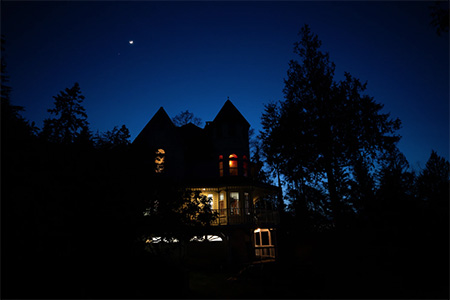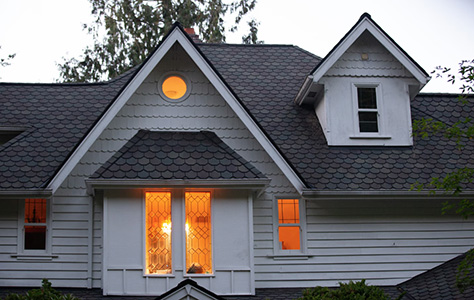For a millennial couple buying their first home, on an island in the Puget Sound, the cost of humanely resolving the bat problem was more than they expected.
||| FROM THE WASHINGTON POST |||
They named him Edward.
The family was well aware of its bat problem even before capturing Edward, but that wasn’t the case when they bought the house. The bats had been occupying the attic of the home on Whidbey Island for what Riecken now estimates to be decades, based on months of cleaning up layers of compacted bat skeletons and waste from the walls. The bats, like the humans, needed a place to live as their surrounding environment became less habitable.
After the state’s deadliest heat wave and two consecutive years of triple-digit summer heat advisories in the Seattle area, Riecken and Powell were eager to raise their 5-month-old son, Robby, somewhere cooler, surrounded by nature. That made the 3,800-square-foot home a deceptively attractive option for a human family — and also for countless bat families.
“A little sweat equity didn’t bother us.” Riecken said. “We’ve rolled up our sleeves before.”
But the house needed more than sweat equity. Authorities would eventually deem it unfit for human occupancy. The family would cash out their retirement accounts and lean on the goodwill of bat conservationists to save their home.
It wasn’t love at first sight, but the home checked most of the young family’s boxes. With four finished stories and four bedrooms, it was spacious enough for their future. The white-shingled house was picturesque, albeit dated. It sat on the top of a hill surrounded by pine trees and Spanish moss. Almost every window had a view of either the old-growth forest or Puget Sound.
“We’d saved up for years living in that trailer,” Powell said. “We just saved and saved.”

Since 2019, home prices in the United States have risen 54 percent. In King County, Washington, where Riecken, 37, and Powell, 35, were living, the median home price was $885,000, according to the Washington Center for Real Estate Research. Median sales prices had flirted with the million-dollar mark for years, and interest rates were climbing. When they got the spacious Whidbey house from the former owner’s estate for close to $850,000, they thought they had found a great deal. The inspection noted there was evidence of “rodents,” but Powell thought, “Who can’t deal with a couple rats?”
But the couple would quickly learn that getting rid of bats is complicated. In Washington, all species of bats are protected, which means they can’t be hunted or killed. They need to be “excluded” — a process of humanely getting them out of the building and patching up any entry points to keep them out. But exclusion can’t be done during the summer months when bat pups don’t yet know how to fly.
No one is exactly sure when the bats moved into the home, but Kurt Licence, a biologist with the Washington Department of Fish and Wildlife, said they were probably drawn to its peak location on a hill. Since bats can’t fly without jumping off a high point, the home’s perch was a draw. It overlooked the water, so there would be lots of insects for them to eat most of the year. It was full of cozy nooks and crannies. The multi-peaked roof was built with something called skip sheathing: staggered wood joists that allowed for easy movement and ventilation.
Bats want their home “to be safe,” Licence said. “They want it to be free from predators, or at least have a good viewshed where they can detect and avoid predators easily. So really, the exact same things that we look for in a place to live.”
**If you are reading theOrcasonian for free, thank your fellow islanders. If you would like to support theOrcasonian CLICK HERE to set your modestly-priced, voluntary subscription. Otherwise, no worries; we’re happy to share with you.**








